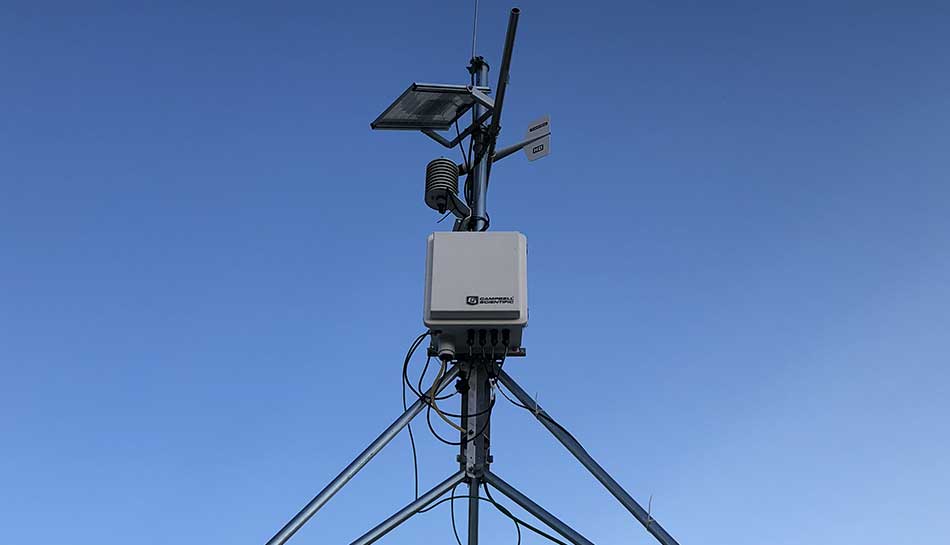Wind speed is an environmental parameter that plays a significant role in the siting of LNG facilities. The use of incorrectly developed wind speed values in siting studies can result in unnecessary capital expenditures, particularly for facilities to be located in relatively small properties, or could result in the facility being in inadvertent non-compliance with siting codes and regulations, which in addition to obvious regulatory risk, has the potential of creating significant public safety concerns.
NFPA 59A (2019) stipulates the provision of impoundment areas to collect LNG that may be accidentally spilled. Additionally, both NFPA 59A and 49 CFR 193.2059 stipulate siting requirements applicable to impoundments at LNG facilities. Some of these are typically referred to as exclusion zones. The extents of exclusion zones are typically established by vapor dispersion modeling and thermal radiation modeling. Wind speed plays a critical role in both analyses.
The aim of this note is to list some of the key factors in the selection of a meteorological data source for the purpose of establishing the wind speed parameters (as well as other metrological parameters) needed for the siting study. We will conclude this note with two case studies.
Some the key considerations in the selection and processing of long-term meteorological time-series are discussed below.
Proper Selection of Meteorological Data Source
It is imperative that a trusted and respected data source be used for the establishment of meteorological parameters to be used in the siting study. In the United States, meteorological parameters are monitored and acquired at thousands of stations across the country. While observations are collected by various public entities, one agency National Oceanic and Atmospheric Agency (NOAA) oversees the aggregation, archiving, and dissemination of the acquired metrological data.
Unfortunately, the systematic and intensive environmental monitoring program present in the United States are not replicated worldwide. Therefore, for project sites located outside of the United States securing measured long-term meteorological data may be more challenging.
When selecting a source of long-term meteorological observations, it is important to perform a series of screening-level analysis to confirm or identify the most suitable station for use.
Which Meteorological Station Should be Used?
In the United States, it is not uncommon to find several sources of long-term metrological observations withing a 50-mile radius of a facility (particularly along the coasts). While in general it would be preferable to use the data from the closet meteorological observation station, this many not always be the right decision. When selecting a source of long-term meteorological observations, it is important to perform a series of screening-level analysis to confirm or identify the most suitable station for use. The selection of the station to be used should consider the factors described below.
Don’t take my word for it. Other members of my graduating class have amazing stories to tell. Many of them have expanded or shaped their services to capture new business despite the global pandemic. 10KSB equips small business owners to confidently pursue their plans or pivot to new opportunities, and they provide ongoing support even after graduation. One of my colleagues has a custom furniture design studio whose customer base was largely hotels and restaurants. As a company hard-hit by the pandemic, the pivot needed to be swift, effective, and decisive. They quickly moved into custom cabinetry for recreational vehicles (RVs) and are doing great as more people look to avoid airplane travel and vacation in the great outdoors during the pandemic.
- Compatibility of environmental conditions between the site and the observation stations. While somewhat subjective, it is important to make sure that climatic conditions at the selected station are most comparable to those prevailing at the site. For example, for a site located along the coast, it may be preferable to use a metrological data from another coastal station rather than one that is located in land, even if latter is marginally closer in distance to the project site.
- Another critical factor is the quality of available historical data. Quality parameters to consider include but are not limited to:
- Consistency of measurements.
- Availability of a detailed description of the observation station
- Accuracy of the measurements.
- Length of record available and extent of data gap.
- The environmental parameters collected at the station should not be impacted by orographic effects.
Perform Detailed Quality Check
It is critical that, before their use, all time-series undergo rigorous quality check irrespective of the source of the data. We have come across numerous siting studies that had to be repeated because of absent or inadequate verification of the long-term historical data used to develop wind parameters, which resulted in the development and subsequent use of incorrect wind speeds in the modeling needed to establish hazard distances. There are well established procedures for assessment of the quality of environmental time-series which, for sake of brevity, will not be discussed here.
Understanding the Nature of Wind Speed Measurement
With the exception of gust, wind speeds are typically average of a number of wind measurements made at a specific frequency over a defined period of time. Understanding the averaging period is critical. This is because a 10-min wind speed will be typically, about 3% lower than a 6-min wind speed, and about 18% lower than a 1-min wind speed.
In conclusion, analysis of third-party collected environmental data, particularly wind records, is not always a straightforward as it may appear. The aim of this brief note is to highlight some of the more common considerations that need to be accounted for during analysis of wind records. Of course, there are a myriad of other factors that need to be accounted for. As such, it is imperative that such analysis be performed by individual with extensive relevant experience and knowledge of the idiosyncrasies often associated with third-party collected environmental records. In Part 2, we will present two case studies illustrating some of the issues we have identified in prior studies.
* * *
